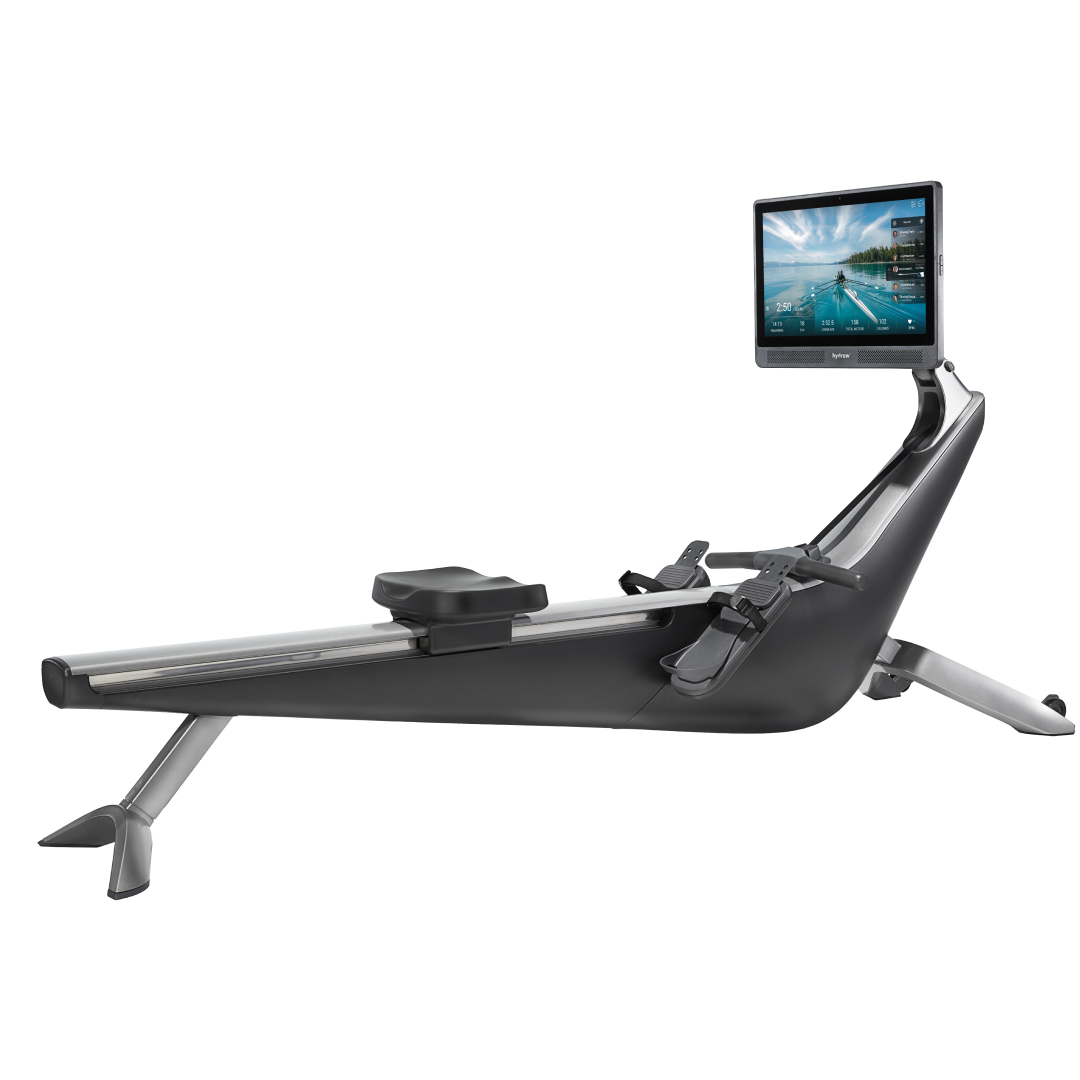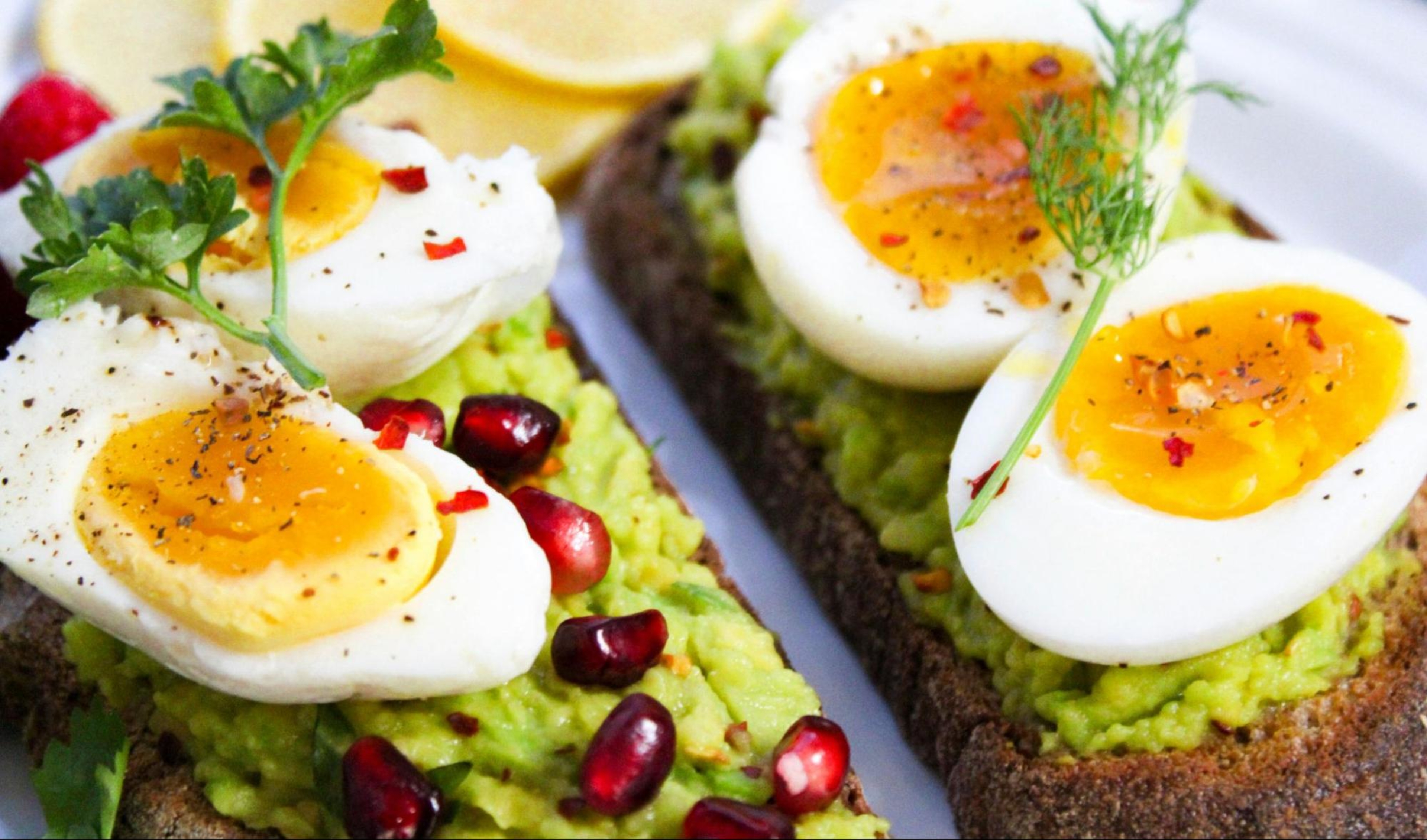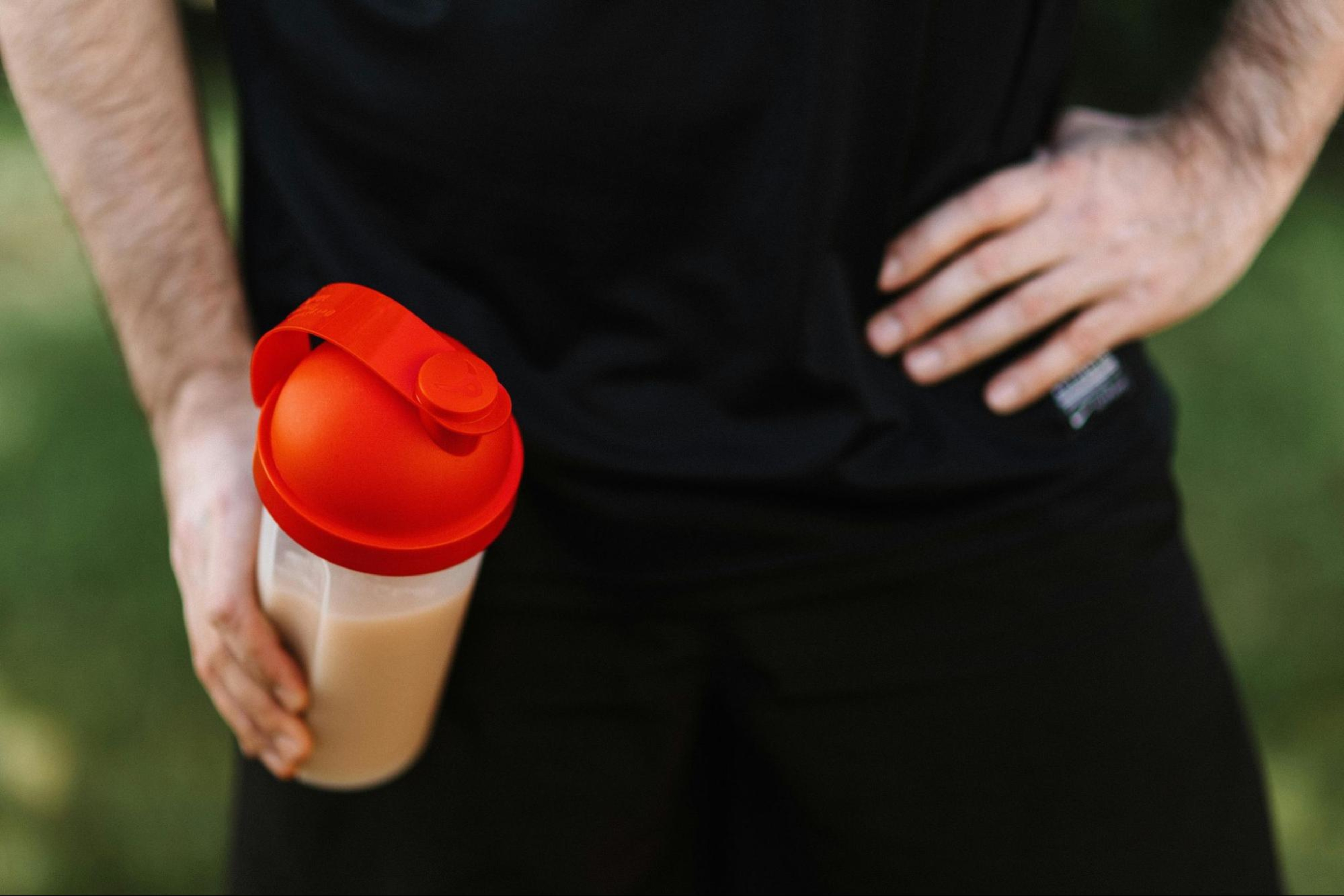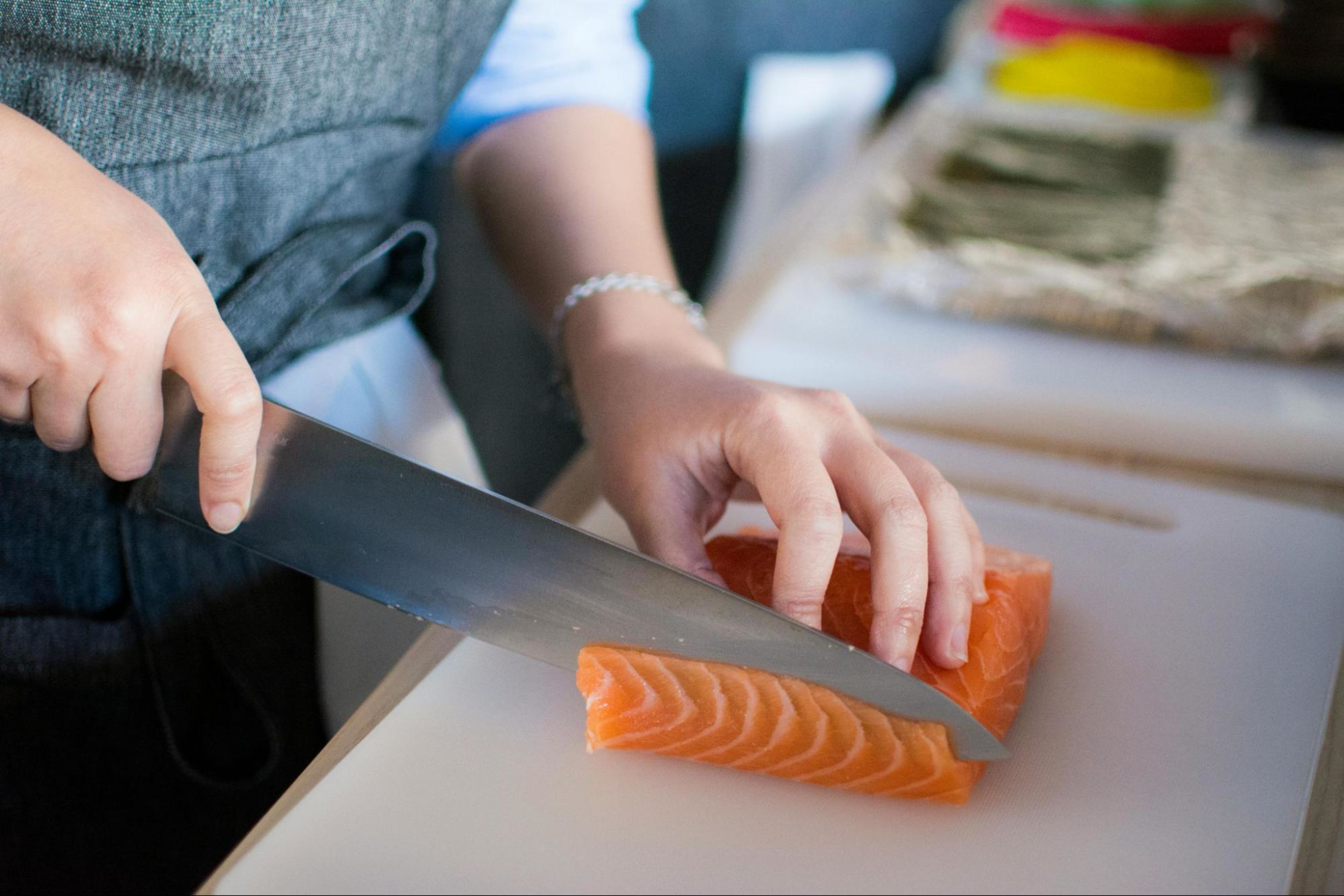How Much Protein Do You Need to Build Muscle?

Protein is having a moment right now. We all know at this point that protein is important for muscle growth, and science continues to tell us that those with stronger muscles live longer, healthier lives. The question is, how much protein do you really need to build muscle?
To answer this question, this article will discuss:
Let’s get into it!
Why protein matters for muscle growth
To understand why protein is so important for building muscle, let’s first talk about how muscle growth works. When we lift weights, or perform demanding movements like rowing and sprinting, it causes microscopic tears in our muscle fibers.
This damage is a signal to the body that it must repair the muscles and build them back stronger to be able to handle a stress like that next time. Essentially, the body is constantly in the process of either breaking down muscle fibers or rebuilding them. This rebuilding phase is called Muscle Protein Synthesis, or “MPS” for short.

Cardio and strength, combined
Burn calories and build muscle with steady, natural movements.
The reason why protein is so essential to muscle growth is because it triggers MPS and supplies amino acids, the raw materials for new muscle. Amino acids in protein, especially one called leucine, cause a spike in MPS. When combined with resistance training, which makes the body more sensitive to amino acids, sufficient protein intake creates the optimal conditions for muscle growth.
Protein is also critical for supporting hypertrophy, the process by which exercises like lifting and rowing lead to bigger, stronger muscles. Hypertrophy creates a mix of more muscle fibers (leading to denser and stronger muscles) and more sarcoplasm, the space around muscle fibers where fluid and energy are stored (leading to bigger muscle size). Thus, getting enough protein is important for everyone, but especially for people trying to build muscle.
How much protein do you need for muscle growth?
Fortunately, there is a scientific consensus around how much protein you actually need for optimal muscle growth. The ideal intake range of protein in order to build muscle is about 0.7 to 1.0 g protein per pound of body weight per day.
For example, a person weighing 150 lbs will want to eat somewhere between 105–150 grams of protein on a given day to support their goals of building muscle. Someone who weighs 200 lbs would target 140–200 grams of protein daily.
Where you fall within this target range will depend on your specific training goals. For example, someone who is cutting weight and in a calorie deficit will want to stay towards the high end of 1.0 g protein per lb, in order to preserve muscle mass and maximize satiety while losing weight. Someone in a maintenance or bulk phase can usually stay towards the low end or middle of this target range.
The science indicates that more advanced lifters may benefit from keeping protein towards the higher end of the target range. Those with quite intense lifting regimens or lots of training volume will experience plenty of muscle protein breakdown, so it’s important to get enough protein to support the rebuilding efforts of MPS. Beginners and those newer to resistance training will likely see plenty of benefit from a protein target at the lower end of the range.

Efficiency for the win.
Work 86% of your muscles in just 20 minutes of rowing with Hydrow.
When and how to eat protein for muscle gain
We know that protein is important for building muscle, and we have a good idea about how much protein to eat to support that goal, but what about timing? When should we be eating protein to maximize muscle gain?
Historically, there has been a lot of fuss made over the “post-workout window” for protein intake. This is why you’ll see gym-goers with their blender bottles at the ready, chugging down protein shakes as soon as they finish their workouts. Science has come around to the understanding that post-workout protein intake is less important than overall intake throughout the day. Put simply, if you are meeting your energy and protein needs at the end of the day, there is little additional benefit to squeezing it in during the post-workout window.
The best strategy for maximizing the effects of protein on muscle gain is to spread out protein throughout the day, taking in about 20–40 grams of protein per sitting with at least a few hours in between. This takes advantage of the way in which MPS spikes after eating protein, but declines even in the presence of additional protein. In other words, there’s a limit to how much protein the body can effectively utilize at any given time.
To sum up: Eating between 20–40 grams of protein every 3–5 hours is enough to consistently trigger the muscle building effects of those MPS peaks and ensures that the protein is put to good use.

Explore Hydrow's library of strength training workouts.
The best ways to incorporate more protein into your diet
Now that you know what science prescribes for optimal protein intake to build muscle, the first step is to track how much protein you’re currently eating and compare that to the target range for your body weight. When you start tracking your protein, you might be surprised how difficult it is to actually hit those higher targets.
The body likes homeostasis, and so in order to make a change and build more muscle, you may have to eat a bit more than you’re used to eating. Since protein-rich foods are so filling, breaking them up into 20–40 gram servings throughout the day is also a great way to eat enough of them to meet your target.
Whole-food sources of protein are almost always preferable to supplemental sources because they contain other beneficial nutrients, such as vitamins and minerals. Whole-food protein sources, whether animal- or plant-based, support not just your muscle-building goals but also your overall health and well-being.
That being said, there is certainly a time and a place for supplemental protein. Protein powder can be a great tool to help you hit higher protein targets. You can easily sneak in a scoop of protein powder into dishes like oatmeal or a yogurt bowl, incorporate it into a smoothie, or just mix into a protein shake. For those with hectic schedules, protein-rich snack bars might be the perfect way to hit that 20–40 gram boost during the busier hours of the day.
When possible, try to favor whole-food sources of protein—but don’t turn your nose up at supplemental protein sources as a way to help you build some serious muscle.
Here are five whole-food sources of animal- and plant-based protein that are rich in other health-boosting nutrients as well:
Animal-based protein sources
Chicken breast: An excellent source of Vitamin B3 (Niacin), which supports energy metabolism.
Eggs: Contains choline, important for brain health.
Salmon: Rich in protein and omega-3 fatty acids for heart and joint health.
Greek yogurt: High in protein and probiotics.
Lean beef: A great source of heme iron, a highly absorbable form.
Plant-based protein sources
Lentils: High in protein and fiber to improve digestion.
Tofu: Complete protein from soy, contains isoflavones which may benefit heart health.
Quinoa: A complete plant protein that also provides carbs and fiber.
Chickpeas: Protein-rich legumes that contain folate, which supports cell repair.
Hemp seeds: Complete protein with a plant-based source of omega-3 fat.
Related blog: 30 High-Protein Snacks to Build Muscle and Fight Hunger
Special considerations for gaining muscle with protein
The recommendations above apply broadly to most people, but there are certain populations who will want to modify their approach slightly.
For example, older adults may need more protein per serving to stimulate the process of MPS. If you are older and looking to gain muscle, try targeting the higher end of the 20–40 gram per serving range when you eat protein.
Athletes who are in a calorie deficit will definitely benefit from keeping protein intake at the higher end of the target range (closer to 1.0 gram protein per pound of body weight). This places them at a lower risk of losing muscle mass while they lose weight due to the calorie deficit.

Explore Hydrow’s library of 5,000+ rowing, circuit training, yoga, Pilates, and mobility workouts.
Vegetarians, vegans, and those following a plant-based diet will want to eat protein sources that have complementary amino acids. Because not all plant-based protein sources are considered “complete” proteins—meaning they don’t contain all of the “essential” amino acids we need to consume through the diet—pairing specific protein sources together ensures you do get a full spectrum of amino acids in adequate amounts.
The easiest way to think about this is the classic combination of rice and beans, a dietary foundation of many dishes across different cultures. Grains like rice are low in an amino acid called lysine, whereas legumes like beans are high in lysine but low in methionine and cysteine. Combining grains with legumes results in a more complete source of protein, and better building blocks for muscle growth.
Signs you may not be eating enough protein
How do you know if you’re eating enough protein? You might be falling short of your protein needs if you find yourself struggling to build and retain muscle despite a dedicated training program and proper recovery. This may be due to not eating enough protein, or maybe just not eating enough calories overall.
While you don’t necessarily have to be in a calorie surplus in order to put on muscle (although a modest increase of 5% to 15% above your maintenance calories might be useful), it’s important to have enough energy on board to fuel the kind of training you need to build muscle.
If you often feel fatigued or unable to really recover from your training sessions, that might also be a sign that you’re not getting enough protein to rebuild what’s being broken down. As a general rule, when you’re training properly, you should spend about a third of your time feeling excellent, a third feeling fine, and a third feeling fatigued. If you notice that you’re spending more than a third of your time feeling sore and beat up, consider adjusting your protein intake.
If you suspect that you’re not eating enough protein, the first step is to track how much you’re actually eating and compare that to the goal range of 0.7–1.0 gram per pound of body weight. Consider moving towards the upper end of the range if the problems persist. Tracking both your protein and your overall caloric intake, at least for a few days, can help you understand if you’re meeting your needs.

Did you know?
Over 90% of Hydrow members are still active one year later.
Is it possible to eat too much protein?
While there are some individuals who may want to avoid excess protein intake (like those with kidney conditions), the risk of eating too much protein is low in healthy individuals. The body will use protein as needed for its myriad functions like MPS and is good at converting any excess into energy that it can use or excreting what it can’t.
Protein-rich foods are very filling, so it’s a somewhat self-limiting macronutrient that is difficult to overeat. More processed and supplemental protein sources might be more problematic than whole food sources, in this regard.
It’s great to hit your protein target, but it shouldn’t come at the cost of gastrointestinal distress or the exclusion of other important nutrients in your diet. Try to maintain a balanced diet even as you emphasize protein to fuel your muscle building.
Your protein game plan
The science is settled on how much protein you need to build muscle: Aim for somewhere between 0.7 and 1 grams of protein per pound of body weight per day. Breaking up your protein into 20–40 gram servings every 3–5 hours is the best way to maximize Muscle Protein Synthesis and keep the muscle building machine humming. Choose whole-food sources of protein instead of supplements whenever possible to support your overall health. Track your calorie and protein intake, at least for a little bit, and adjust as needed to hit your targets.
Protein is only part of the equation when it comes to muscle growth. You’ll also want an effective and engaging training program that you can stick to over the long-term. Consider Hydrow’s vast collection of strength and rowing workouts, led by world-class Athletes, and tap into a community of like-minded people on a mission to move and get stronger.
Learn more about Hydrow today!

Real strength keeps moving
Learn how working out with Hydrow can help support a fuller, more active life.
References:
García-Hermoso, A., Cavero-Redondo, I., Ramírez-Vélez, R., Ruiz, J. R., Ortega, F. B., Lee, D.-C., & Martínez-Vizcaíno, V. (2018). Muscular strength as a predictor of all-cause mortality in an apparently healthy population: A systematic review and meta-analysis of data from approximately 2 million men and women. Archives of Physical Medicine and Rehabilitation, 99(10), 2100–2113.e5. https://doi.org/10.1016/j.apmr.2018.01.008.
Morton, R. W., Murphy, K. T., McKellar, S. R., Schoenfeld, B. J., Henselmans, M., Helms, E., ... & Phillips, S. M. (2018). A systematic review, meta-analysis and meta-regression of the effect of protein supplementation on resistance training–induced gains in muscle mass and strength in healthy adults. British Journal of Sports Medicine, 52(6), 376–384. https://doi.org/10.1136/bjsports-2017-097608
Schoenfeld, B. J., & Aragon, A. A. (2018). How much protein can the body use in a single meal for muscle-building? Implications for daily protein distribution. Journal of the International Society of Sports Nutrition, 15(10). https://doi.org/10.1186/s12970-018-0215-1
Jäger, R., Kerksick, C. M., Campbell, B. I., Cribb, P. J., Wells, S. D., Skwiat, T. M., ... & Aragon, A. A. (2017). International Society of Sports Nutrition Position Stand: protein and exercise. Journal of the International Society of Sports Nutrition, 14(20). https://doi.org/10.1186/s12970-017-0177-8
American College of Sports Medicine. (n.d.). Protein Intake for Optimal Muscle Maintenance. Retrieved from https://www.acsm.org/docs/default-source/files-for-resource-library/protein-intake-for-optimal-muscle-maintenance.pdf











